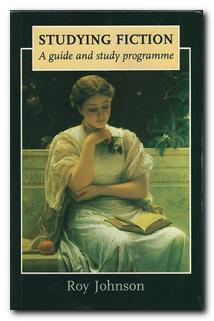a guide to electronic texts
Authors-Q-S
Radford, Dollie (1858-1920)
A Ballad of Victory (1907)
SGML at VWWP:
http://www.indiana.edu/~letrs/vwwp/radford/victory.html
In Summer-Time (1905)
SGML at VWWP:
http://www.indiana.edu/~letrs/vwwp/radford/summer.html
A Light Load (1891)
SGML at VWWP:
http://www.indiana.edu/~letrs/vwwp/radford/lightload.html
Poems (1910)
SGML at VWWP:
http://www.indiana.edu/~letrs/vwwp/radford/radpoems.html
Sea-Thrift: a Fairy Tale (1904)
SGML at VWWP:
http://www.indiana.edu/~letrs/vwwp/radford/seathrift.html
Songs and Other Verses (1895)
SGML at VWWP:
http://www.indiana.edu/~letrs/vwwp/radford/songs.html
The Young Gardeners’ Kalendar (1904)
SGML at VWWP:
http://www.indiana.edu/~letrs/vwwp/radford/kalendar.html
Robins, Elizabeth [C.E. Raimond] (1862-1952)
The Mills of the Gods
HTML at Jacksonville State:
http://www.jsu.edu/depart/english/robins/docshort/millsgod.htm
My Little Sister
HTML at Jacksonville State:
http://www.jsu.edu/depart/english/robins/mls/index.htm
The Open Question: A Tale of Two Temperaments
HTML at Jacksonville State:
http://www.jsu.edu/depart/english/robins/openq/index.htm
Votes for Women (1909)
SGML at VWWP:
http://www.indiana.edu/~letrs/vwwp/robins/votes.html
Rossetti, Christina Georgina (1830-1894)
Goblin Market
HTML at crocker.com:
http://www.crocker.com/~lwm/goblin.html
HTML at GeoCities:
http://www.geocities.com/~spanoudi/poems/roset01.html
Sing-Song: A Nursery Rhyme Book
(based on the 1893 edition)
HTML at Celebration of Women Writers:
http://digital.library.upenn.edu/women/rossetti/singsong/singsong.html
Schreiner, Olive Emilie Albertina [Ralph Iron] (1855-1920)
A Closer Union (1909)
SGML at VWWP:
http://www.indiana.edu/~letrs/vwwp/schreiner/closer.html
Dream Life and Real Life (1893)
SGML at VWWP:
http://www.indiana.edu/~letrs/vwwp/schreiner/dreamlife.html
Dreams (1898)
SGML at VWWP:
http://www.indiana.edu/~letrs/vwwp/schreiner/dreams.html
The Political Situation (1896)
SGML at VWWP:
http://www.indiana.edu/~letrs/vwwp/schreiner/politsit.html
Stories, Dreams and Allegories (1923)
SGML at VWWP:
http://www.indiana.edu/~letrs/vwwp/schreiner/schreiner-stories.html
Story of an African Farm, vol. 1 (1883)
SGML at VWWP:
http://www.indiana.edu/~letrs/vwwp/schreiner/storyafr1.html
Story of an African Farm, vol. 2 (1883)
SGML at VWWP:
http://www.indiana.edu/~letrs/vwwp/schreiner/storyafr2.html
Trooper Peter Halket of Mashonaland (1897)
SGML at VWWP:
http://www.indiana.edu/~letrs/vwwp/schreiner/trooper.html
Undine (1928)
SGML at VWWP:
http://www.indiana.edu/~letrs/vwwp/schreiner/undine.html
Woman and Labour
Gutenberg text:
http://digital.library.upenn.edu/webbin/gutbook/lookup?num=1440
Skene, Felicia (1821-1899)
The Inheritance of Evil, Or, the Consequence of Marrying a Deceased Wife’s Sister (1849)
SGML at VWWP:
http://www.indiana.edu/~letrs/vwwp/skene/evil.html
Penitentiaries and Reformatories (1865)
SGML at VWWP:
http://www.indiana.edu/~letrs/vwwp/skene/skene-reform.html
Scenes from a Silent World, or Prisons and their Inmates (1889)
SGML at VWWP:
http://www.indiana.edu/~letrs/vwwp/skene/silent.html
The Shadow of the Holy Week (1883)
SGML at VWWP:
http://www.indiana.edu/~letrs/vwwp/skene/shadow.html
A Test of the Truth by “Oxoniensis”(1897)
SGML at VWWP:
http://www.indiana.edu/~letrs/vwwp/skene/test.html
The Tutor’s Ward, Vol. 1 (1851)
SGML at VWWP:
http://www.indiana.edu/~letrs/vwwp/skene/tutor1.html
The Tutor’s Ward, Vol. 2 (1851)
SGML at VWWP:
http://www.indiana.edu/~letrs/vwwp/skene/tutor2.html
Steel, Flora Annie (1847-1929)
English Fairy Tales
HTML at Baldwin Project:
http://www.mainlesson.com/display.php3?author=steel&book=english&story=_contents
The Modern Marriage Market (1898)
SGML at VWWP:
http://www.indiana.edu/~letrs/vwwp/corelli/modmarr.html
The Potter’s Thumb, Vol. 1 (1894)
SGML at VWWP:
http://www.indiana.edu/~letrs/vwwp/steel/potter1.html
The Potter’s Thumb, Vol. 2 (1894)
SGML at VWWP:
http://www.indiana.edu/~letrs/vwwp/steel/potter2.html
The Potter’s Thumb, Vol. 3 (1894)
SGML at VWWP:
http://www.indiana.edu/~letrs/vwwp/steel/potter3.html
Tales of the Punjab (1894)
Illustrated HTML at Celebration of Women Writers:
http://digital.library.upenn.edu/women/steel/punjab/punjab.html
contents – archives – encoding – authors – bibliography
 Studying Fiction is an introduction to the basic concepts and technical terms you need when making a study of stories and novels. It shows you how to understand literary analysis by explaining its elements one at a time, then showing them at work in short stories which are reproduced as part of the book. Topics covered include – setting, characters, story, point of view, symbolism, narrators, theme, construction, metaphors, irony, prose style, tone, close reading, and interpretation. The book also contains self-assessment exercises, so you can check your understanding of each topic. It was written by the same author as the guidance notes on this page that you are reading right now.
Studying Fiction is an introduction to the basic concepts and technical terms you need when making a study of stories and novels. It shows you how to understand literary analysis by explaining its elements one at a time, then showing them at work in short stories which are reproduced as part of the book. Topics covered include – setting, characters, story, point of view, symbolism, narrators, theme, construction, metaphors, irony, prose style, tone, close reading, and interpretation. The book also contains self-assessment exercises, so you can check your understanding of each topic. It was written by the same author as the guidance notes on this page that you are reading right now.